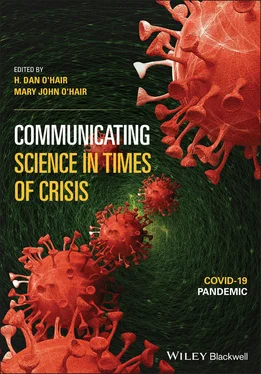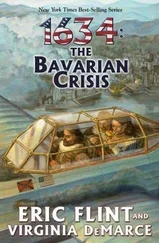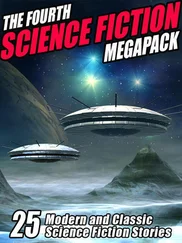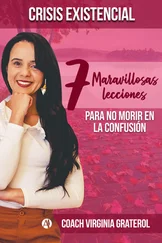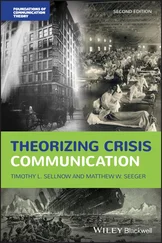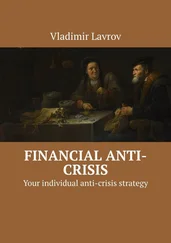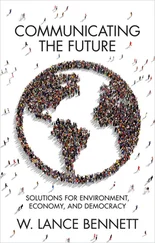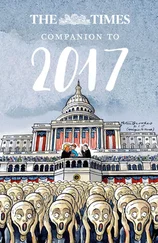Communicating Science in Times of Crisis
The COVID-19 Pandemic
Edited by H. Dan O’Hair and Mary John O’Hair University of Kentucky

This edition first published 2021 © 2021 John Wiley & Sons Inc.
All rights reserved. No part of this publication may be reproduced, stored in a retrieval system, or transmitted, in any form or by any means, electronic, mechanical, photocopying, recording, or otherwise, except as permitted by law. Advice on how to obtain permission to reuse material from this title is available at http://www.wiley.com/go/permissions.
The right of H. Dan O’Hair and Mary John O’Hair to be identified as the authors of the editorial material in this work has been asserted in accordance with law.
Registered Offices
John Wiley & Sons, Inc., 111 River Street, Hoboken, NJ 07030, USA
Editorial Office
111 River Street, Hoboken, NJ 07030, USA For details of our global editorial offices, customer services, and more information about Wiley products, visit us at www.wiley.com.
Wiley also publishes its books in a variety of electronic formats and by print-on-demand. Some content that appears in standard print versions of this book may not be available in other formats.
Limit of Liability/Disclaimer of Warranty
While the publisher and authors have used their best efforts in preparing this work, they make no representations or warranties with respect to the accuracy or completeness of the contents of this work and specifically disclaim all warranties, including without limitation any implied warranties of merchantability or fitness for a particular purpose. No warranty may be created or extended by sales representatives, written sales materials or promotional statements for this work. The fact that an organization, website, or product is referred to in this work as a citation and/or potential source of further information does not mean that the publisher and authors endorse the information or services the organization, website, or product may provide or recommendations it may make. This work is sold with the understanding that the publisher is not engaged in rendering professional services. The advice and strategies contained herein may not be suitable for your situation. You should consult with a specialist where appropriate. Further, readers should be aware that websites listed in this work may have changed or disappeared between when this work was written and when it is read. Neither the publisher nor authors shall be liable for any loss of profit or any other commercial damages, including but not limited to special, incidental, consequential, or other damages.
Library of Congress Cataloging-in-Publication Data
Names: O’Hair, Dan, editor. | O’Hair, Mary John, editor.
Title: Communicating science in times of crisis / edited by H. Dan O’Hair, Mary John O’Hair. Description: Hoboken, NJ : John Wiley & Sons, 2021. | Includes bibliographical references. Identifiers: LCCN 2020058501 (print) | LCCN 2020058502 (ebook) | ISBN 9781119751779 (paperback) |
ISBN 9781119751786 (pdf) | ISBN 9781119751793 (epub) | ISBN 9781119751809 (ebook) Subjects: LCSH: Communication in science. | Truthfulness and falsehood. | Denialism. Classification: LCC Q223 .C65439 2021 (print) | LCC Q223 (ebook) | DDC 501/.4--dc23 LC record available at https://lccn.loc.gov/2020058501 LC ebook record available at https://lccn.loc.gov/2020058502
Cover image: © mustafa güner/E+/Getty Images
Cover design by Wiley
Set in 9.5/12.5pt STIXTwoText by Integra Software Services, Pondicherry, India
1 Cover
2 Title page Communicating Science in Times of Crisis The COVID-19 Pandemic Edited by H. Dan O’Hair and Mary John O’Hair University of Kentucky
3 Copyright
4 List of Contributors
5 Part 1: Conceptualizing Communication Science and COVID-19 Chapter 1: Managing Science Communication in a Pandemic Chapter 2: Comprehending Covidiocy Communication: Dismisinformation, Conspiracy Theory, and Fake News Chapter 3: How Existential Anxiety Shapes Communication in Coping with the Coronavirus Pandemic: A Terror Management Theory Perspective
6 Part 2 Promoting Health and Well-being Chapter 4: Communication and COVID-19: Challenges in Evidence-based Healthcare Design Chapter 5: Identity and Information Overload: Examining the Impact of Health Messaging in Times of Crisis Chapter 6: Social Media, Risk Perceptions Related to COVID-19, and Health Outcomes Chapter 7: Overcoming Obstacles to Collective Action by Communicating Compassion in Science Chapter 8: Communicating the Science of COVID-19 to Children: Meet the Helpers Chapter 9: The Use of Telehealth in Behavioral Health and Educational Contexts During COVID-19 and Beyond
7 Part 3 Advancing Models of Information and Media Chapter 10: Toward a New Model of Public Relations Crisis and Risk Communication Following Pandemics Chapter 11: Perspective Change in a Time of Crisis: The Emotion and Critical Reflection Model Chapter 12: Social Media Surveillance and (Dis)Misinformation in the COVID-19 Pandemic Chapter 13: Science Communication and Inoculation: Mitigating the Effects of the Coronavirus Outbreak
8 Part 4 Examining Policy and Leadership Chapter 14: Communicating with Policymakers in a Pandemic Chapter 15: Equally Unpleasant Choices: Observations on School Leadership in a Time of Crisis Chapter 16: Controlling the Narrative: Mixed Messages and Presidential Credibility Chapter 17: Communicating Death and Dying in the COVID-19 Pandemic
9 Index
10 End User License Agreement
1 Chapter 1 Table 1.1 GHS index.
2 Chapter 2 Table 2.1 Illustrative conceptual definitions of... Table 2.2 Truthful but misleading claim typology. Table 2.3 A typology of fake news definitions. Table 2.4 Dimensions of information disorder....
3 Chapter 4Table 4.1 COVID-19’s impact on technology use...Table 4.2 Application of RPA framework communication....
4 Chapter 8Table 8.1 Appeals to collective efficacy in meet....
5 Chapter 12Tables 12.1 Exemplary myths and conspiracy theories...
6 Chapter 14Table 14.1 The process and the obstacle.
7 Chapter 17Table 17.1 Functions of disaster incidence,...
1 Chapter 1 Figure 1.1 Scientists and science.
2 Chapter 2 Figure 2.1 Google nGram of pseudoscience, conspiracy theory, and... Figure 2.2 Venn diagram typology of Mis-/Dis-/Mal-Information... Figure 2.3 Quadrant typology of deception forms... Figure 2.4 Deceptive intention spectrum of information... Figure 2.5 Contextual typology of misinformation...
3 Chapter 4 Figure 4.1 Risk perception attitude framework.... Figure 4.2 Hierarchy of controls applied to COVID-19...Figure 4.3 Critical to quality design features of the...
4 Chapter 10Figure 10.1 Anticipatory Model of Crisis Management (AMCM)...Figure 10.2 The B.A.S.I.C. model. Source: Based on Michaelson...Figure 10.3 Crisis planning and preparedness pyramid...Figure 10.4 The crisis morphing model.
5 Chapter 11Figure 11.1 Emotion and Critical Reflection....Figure 11.2 Study 1 serial mediation analysis....Figure 11.3 Study 2 serial mediation analysis....
Читать дальше
